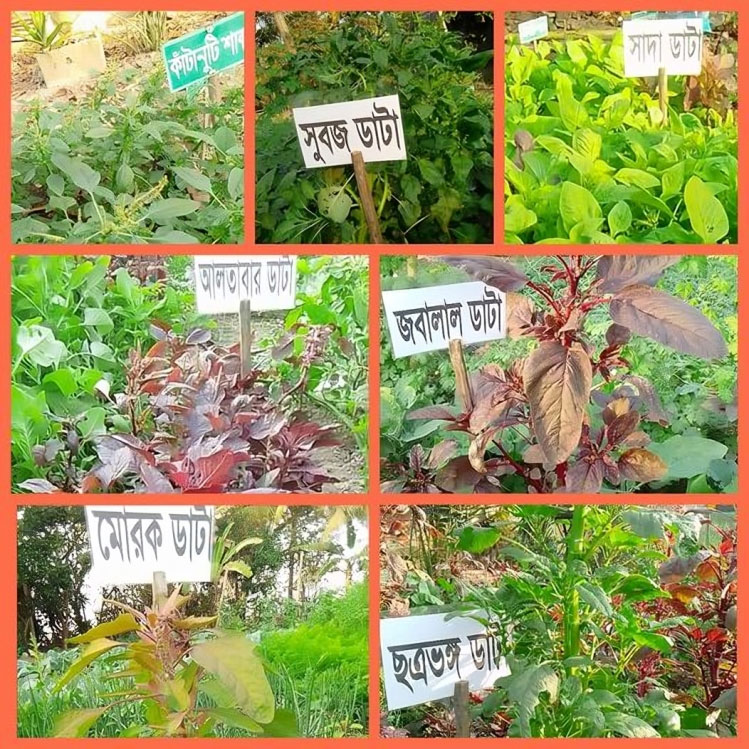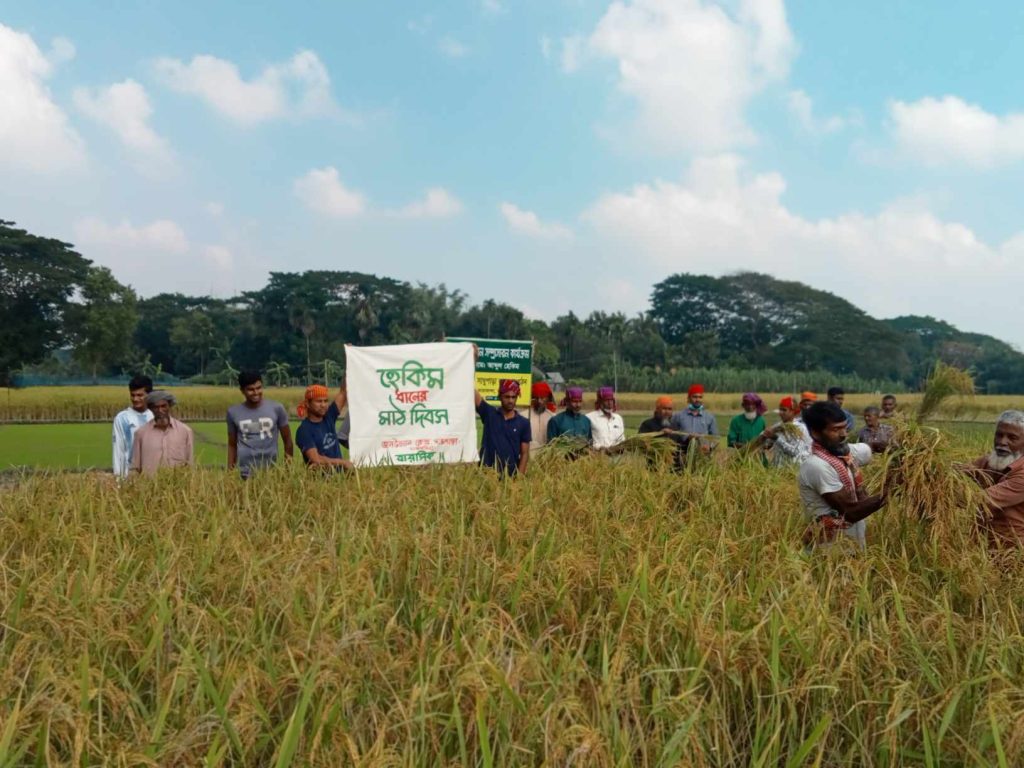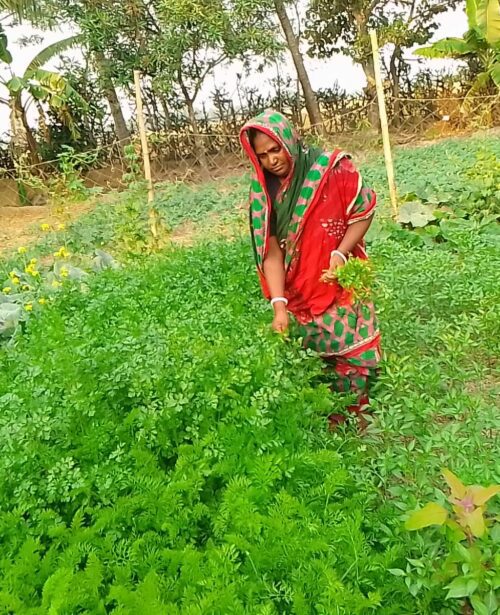How does one make sure that the benefits of scientific knowledge are inclusive, and that the praxis of small producers are considered equally essential to building a genuinely sustainable agricultural practice?
There’s a need to see farmers as active adopters of farming technologies with their own expertise and agency, and their experience as legitimate sources of knowledge. This is why agroecology advances farmer-led research and development in agriculture, which are often sidelined or overlooked in formal and institutionalized research. The participatory approach of farmer-led research and farmer-to-farmer learning leads to the creation of more locally appropriate innovations, stronger local capacities as the innovations are readily taken up by other farmers, and livelihood impacts are broad and substantial.
In this feature we share farmer-led research and development initiatives undertaken by IPAM field learning site Bangladesh Resource Center for Indigenous Knowledge (BARCIK) and their partner farmer organizations. BARCIK’s efforts ensure that farmers play a leading role in the research process, rather than being mere recipients of findings generated elsewhere.

Stem Amaranth
A farmer-led on-farm participatory research to select suitable amaranth cultivars for the winter season has been ongoing since November 2023 in the courtyard of a farm in the south-western coastal area of Dhumghat village in Sahymnagar upazila under Satkhira district.
The research involves farmer-led trials of seven native cultivars of stem amaranth grown in experimental plots that vary in size based on available space, with no replications, and adhere to agroecological farming practices without the use of agrochemicals. The seven cultivars are Sobuj amaranth, Sada amaranth, Katanote, Altabar amaranth, Joba lal amaranth, Morog amaranth and Satravanga amaranth.
A bi-weekly data gathering template has been developed to record farmers’ observations. The detailed process has been thoroughly discussed within the farmers group and individual and collective responsibilities have been assigned.
Decisions regarding farmers’ exposure visits, results-sharing meetings and field days will be determined through group consensus at an appropriate stage in the trial. While regular observations will be conducted by the enthusiastic farmers themselves, they have been actively involved in every step of the trial process, ranging from problem identification to execution, and eventually evaluation of the experiments. Promising innovations will be identified based on the collective evaluation of agroecological practices. Documentation and other facilitation support will be provided by a community Field Facilitator active in the area.
Hakim Rice
Seeking to address climate change impacts on rice and reduce the production cost of this staple grain, Abdul Hakim, who has been conducting on farm experimentation with 20 rice landraces on his own land since 2009, encountered immense enthusiasm and significant attention for his on-farm research from the farming communities in his village, with the local farmers actively participating in the experimentation work.
In 2009, Hakim, president of a farmers’ organization in Sadhupara Union of Tarakanda Upazila in Mymensingh district, found eight out of 20 rice landraces to be resistant to diseases, had low water requirements for cultivation, while providing good yield. In the following year, he again conducted experiments with those eight varieties and observed distinct characteristics in the grains and other traits of one plant during the flowering stage. He collected the grains of that particular plant for further examination and continued monitoring and continued trials for the next five years, following the mass selection method. In 2011, the participatory experiment with the unidentified rice species started given the interest of the rice farming communities due to their yield potentiality, disease resistant quality, grain composition, and other traits including taste, cooking quality, and straw.
From the next season onwards, farmers in Sadhupara started collecting seeds of that rice from Abdul Hakim. In the Aman season of 2019, 17 farmers in the village cultivated Hakim’s rice on their lands and achieved a yield of 6.23 ton/hac without applying any agrochemicals. As a result, the unknown rice became popular in the village, and gradually, it came to be known as ‘Hakim Rice’ as he discovered and nurtured this species.
After five consecutive years of experimentation, proving its adaptability at local context, this rice is now being cultivated by 94 farmers on 2360 decimals of land in 11 villages of Tarakanda Upazila in Mymensingh district in the year 2023. Abdul Hakim’s efforts and relentless endeavors have benefited many resource poor farmers in the village, reducing their costs of rice cultivation. Simultaneously, their dependency on the market for seeds has decreased.

Conclusion
Both narratives showcase the transformative power of farmer-led research in agriculture, a theme that, according it BARCIK’s director for agroecology and food security ABM Touhidul Alam, “resonates deeply with BARCIK’s mission to empower marginal farming communities through skill, knowledge-sharing and innovation. BARCIK aims to highlight the diverse ways in which farmer-led research can revolutionize agricultural practices and improve livelihoods. Amaranth and Hakim rice represent different crops with unique challenges and opportunities, yet both emphasize the importance of harnessing local knowledge and expertise in driving agricultural innovation.”
Through this combined narrative, BARCIK seeks to inspire other farming communities to embrace a participatory approach to research and development, fostering a culture of collaboration and empowerment. By amplifying the voices and experiences of farmers, BARCIK hopes to catalyze positive change within the agricultural sector, ultimately leading to greater sustainability, advancing agro-ecology, resilience, and prosperity for all.
(This article draws heavily from the original articles written by Abul Kalam Azad from Shyamnagar Satkhira and Abdur Rob from Netrakona and translated by ABM Touhidul Alam which appeared on the BARCIK website. We appreciate the generosity of BARCIK for allowing us to build on the original articles.)


